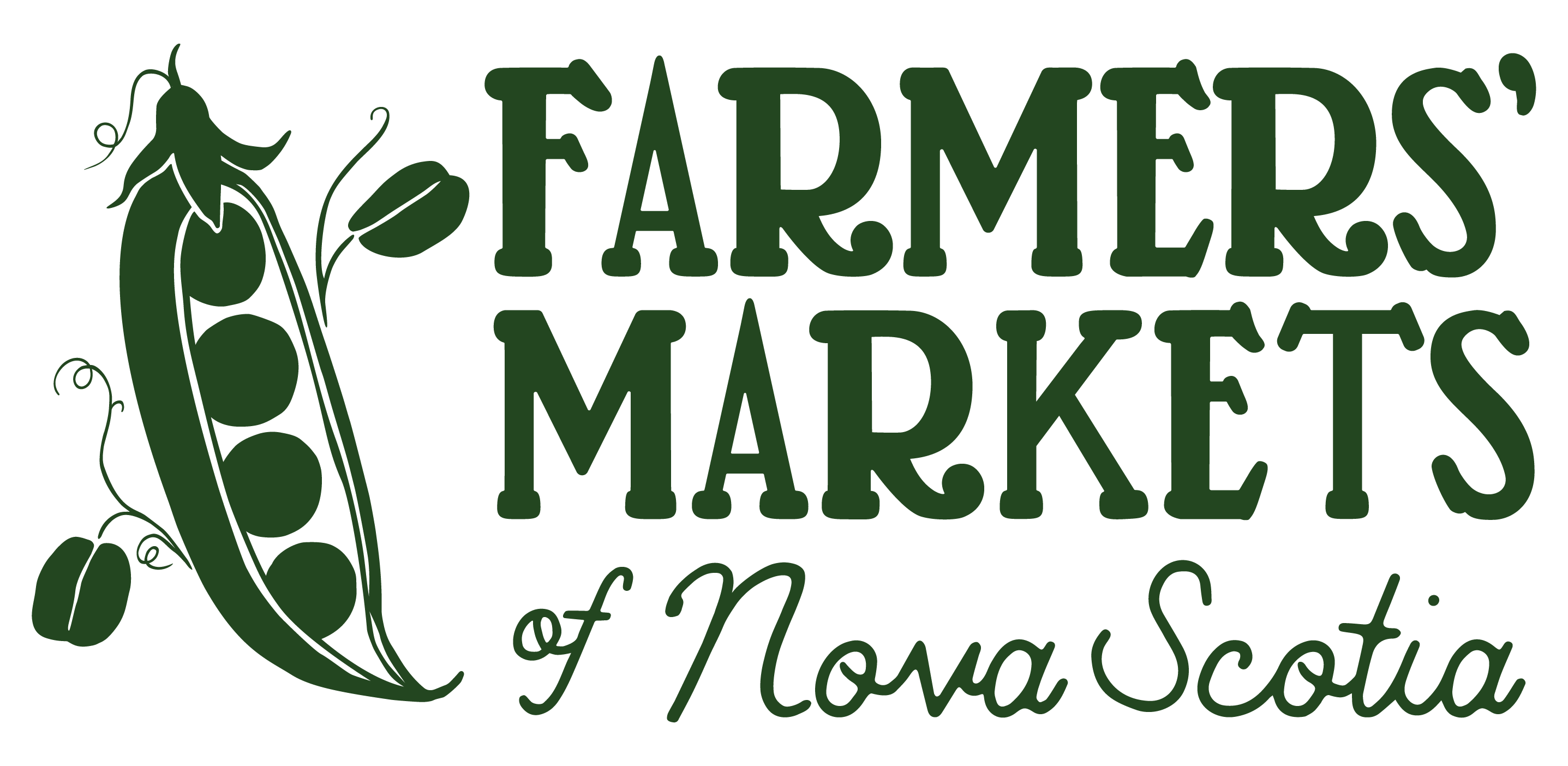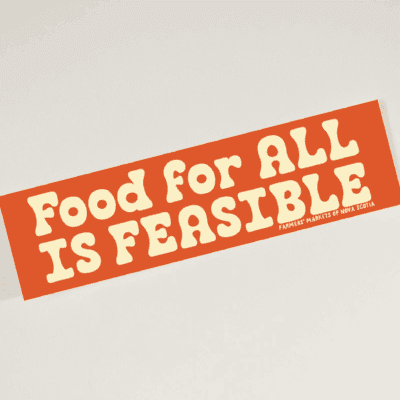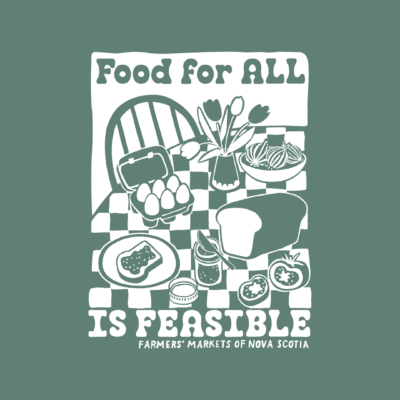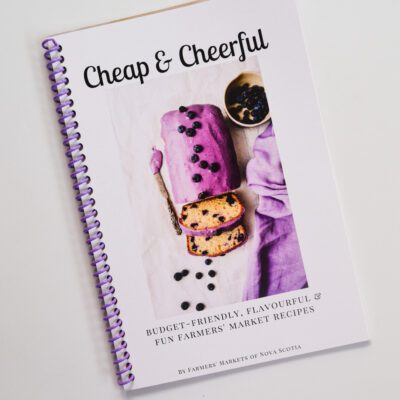Flourish Community Development Co-operative undertook an extensive evaluation process to capture the impact of our 2023 Nourishing Communities Food Coupon Program. To read the full report, please click here! The Executive Summary can be found below.
Executive Summary
The 2023 Nourishing Communities Food Coupon Program was the fifth iteration of a program first piloted in May 2019. This iteration upheld the same three key objectives as the previous iterations:
- To provide financial support to those in need to access healthy food, recognizing that 28.9%, almost 1 in 3, people in Nova Scotia are food insecure, the highest rate amongst the provinces;
- To provide an experience that supports physical, mental, and community health; and
- To support local producers and farmers in developing a robust and resilient food system in Nova Scotia.
With funding support from: the Nova Scotia government department of Communities, Culture, Tourism and Heritage ($422,400); Nova Scotia Liquor Commission For the Good of Our Community Fund ($500); and Nova Scotia Young Farmers ($500) – Farmers’ Markets of Nova Scotia (FMNS) distributed $299,673 worth of market bucks (also referred to as “Food Bucks”) over an 8-month period to 386 households (an average of approximately $776 per household) across 33 participating farmers’ markets in partnership with 48 community partner organizations. The 33 FMNS member farmers’ markets were:
| Markets Continuing from Previous Years | |
|---|---|
| Alderney Landing Farmers’ Market | Mabou Farmers’ Market |
| Annapolis Royal Farmers’ and Traders’ Market | Merigomish SchoolhouseMarketplace |
| Antigonish Farmers’ Market | Musquodoboit Harbour Farmers’ Market |
| Avon Community Farmers’ Market | New Glasgow Farmers’ Market |
| Barrington Farmers’ Market | Novalea Farmers’ Market |
| Bridgewater Farmers’ Market | Privateer Farmers’ Market |
| Cape Breton Farmers’ Market | Prospect Communities Farmers’ Market |
| Chester Farmers and Artisans Market | Pugwash Farmers’ Market |
| Fairview Clayton Park Farmers’ Market | Shelburne Guild Hall Farmers’ Market |
| Halifax Brewery Farmers’ Market | Spryfield Farmers’ Market |
| Halifax Seaport Farmers’ Market | Tantallon Farmers’ Market |
| Hope Blooms Farmers’ Market | Tatamagouche Farmers’ Market |
| Hubbards Farmers’ Market | Truro Farmers’ Market |
| Kentville Farmers’ Market | Wolfville Farmers’ Market |
| Lunenburg Farmers’ Market | Yarmouth Farmers’ Community Market |
| New Markets for 2023 | |
| Argyle Farmers’ & Artisanal Market | Springhill Farmers’ Market |
| Portapique Farmers’ Market | |
By nearly any measure, the 2023 Nourishing Communities Food Coupon Program was a great success. Consider the following highlights:
- High redemption rates: Coupon redemption rates were extremely high, with 95.7% of all coupons being used. This figure is higher than the first, second, and third iterations of the program (88.9%, 86% and 86.5% redemption rate, respectively) and slightly below last year’s (96.5%).
- Healthy spending choices: Despite having no restrictions on how their coupons could be redeemed, participants overwhelmingly made healthy spending decisions on locally sourced food, demonstrating a clear need. More than 79% of all coupons redeemed were used directly towards the purchase of foods, which included produce, prepared foods, value-added foods and other agri-food products (compared with 74% last year and 78% the year prior). 27% of all redemptions were for produce, up from 23% last year.
- Engaged participants: 341 participants (88% of all program participants) completed an exit survey at the conclusion of the program to evaluate their experience (results included within the report). This is a significantly high response rate for this type of engagement.
- Tangible benefits: When asked to evaluate the overall benefit of the program, 95% of respondents indicated that the program provided either ‘an extreme amount of benefit’ or ‘quite a bit of benefit’ (This is on par with 95% in 2022 and up from 80% in 2021). Four percent said the program offered ‘some benefit but not much’, and just 1% of respondents indicated they received no real benefit at all.
- Expanding social networks: 77% of participants indicated they made at least one new friend or social contact through their participation in the program. This is similar to
last year (79%), but up from the first three years of the program (57% in 2019, 43% 2020, and 61% 2021).
- Diversifying dietary choices: 88% of participants bought/consumed foods that were not part of their diet previously (similar to 89% last year, 88% in 2021 and 82% in 2020).
- Expected long-term dietary changes: 78% of participants expect to make long-term changes to their diet because of their participation in this program. This is slightly lower than last year (82%), but up from 61%, 62% and 50% in the first three years of the program.
- Increased sense of community belonging: 93% of participants report feeling more connected to their community because of their participation in this program. This is up from 89% last year, and 85% during the pilot year.
- Eating healthier: 91% of participants reported eating healthier foods than usual during their participation in the program (on par with last and up slightly from the first three years of the program – 81%, 87% and 85%).
- Freeing budgets to meet other needs: 92% of participants – as a result of this program – felt they had more money to meet their other (non-food/grocery) needs. This is consistent with 88%, 85%, 94% and 94% during the first four years of the program.
- Good value for money: 97% of market going and online ordering participants believe they received good value for their Food Bucks overall (This is consistent with 97% in 2019 and 2022, and slightly up from 93% in 2020 and 91% in 2021). 100% of food box recipients believe they received good value for their market boxes, overall.
- Spending time browsing and socializing: 62% of all market going respondents reported that they stayed at the market for more than 30 minutes each week (up from 59% last year, and 41% in 2021), while an additional 29% said they stayed between 21-30 minutes (up from 26% last year). Only 10% of participants reported staying less than 20 minutes (down from 15% last year). Online ordering participants spent less time shopping, with 22% spending more than 30 minutes shopping, 55% spending 11-30 minutes shopping and 22% spending less than 10 minutes shopping online.
- Making it a social outing: 60% of market going respondents either always or often attended the market with a family member or friend (up from 56% in 2022). 19% sometimes attended the market with someone else (up from 17% in 2022), while 21% either never or almost never attended the market with someone else (down from 27% in 2022). Online ordering respondents, however, were less likely to shop with someone else, with 70% of respondents always shopping by themselves, 10% rarely shopping with someone and 20% sometimes or always shopping with someone else.
- Extended reach of purchased foods: 85% of all respondents indicated that other people in their household regularly consumed products they purchased/received as part of the Nourishing Communities program (up significantly from 61% in 2022, and 73% in 2021). On average, participants regularly shared their purchased foods with 2.68 other people (up from 2.35 in 2022, 1.87 in 2021). Therefore, more participants regularly shared their purchased foods in 2023 compared to 2022, and of the people who did share, they shared with a larger number of people.
- Injecting more money into the local economy: 65% of market going and online ordering participants reported spending money during their market visits/orders in addition to their market Bucks (on par with 66% last year). 32% of participants reported spending more than $10 of non-Food Bucks money per visit, on average, with 18% of that group spending more than $20 of non-market Bucks money (i.e. cash) per visit, on average. A conservative estimated average of additional expenditure per participant was $7.51 per visit. This is slightly down from $8.46 in 2022.
- Economic impact – though not directly measured, is presumed to be significant. All coupons were redeemed for locally produced foods and goods, resulting in minimal economic leakage. Similar to the prior four years of the program, participants continued to note that knowing they were supporting local producers when using their market Bucks was an important aspect of their program experience.
- High Interest in further participation: 99% of participants would, if given the opportunity, participate in the program again.
- Continued market visits: 88% of participants would like to continue visiting their farmers’ market on a regular basis now that the program has ended. However, of the 88%, 52% of them are unable to without the help of the program. Only 3% said they would not be interested without the program and 4% were unsure. 6% gave other responses, with all respondents stated that they would like to continue, but noted some of the things that may get in the way like markets being closed during certain seasons, only being able to shop when their funds allow for it, and not being able to spend the same amount of money without the program.
- Positive life impact: 99% of respondents agreed that ‘this program had a positive impact on my life’, with 81% strongly agreeing, and 18% somewhat agreeing.
In addition to these measures, participants from all 33 markets offered glowing endorsements of the program. Here are several examples:
I absolutely love this program and I feel so grateful I’ve been able to participate again. I think it is an incredible opportunity. It is crucial in bridging the gap to nutritious food and community for the participants and it also gives a sense of belonging. I love that the program is offered in my community and I hope it can be offered to more people in the future. Thank you!!
Thank you so much for this program. We are so grateful it goes a long way in feeding my family wholesome real nourishing food.
I’m a second year participant. The program has had a very positive outcome on my life. I go without less. I participate in events I never would’ve been able to. It’s my only social outing and it’s helped me make friends. I’m also a proud volunteer at the market now. You’ve improved the quality of my life. I really can’t thank you enough
It was a wonderful experience getting to participate in the program. It gave me access to food I would not be able to buy on my fixed income. We were able to eat healthier options. Thank you so much for the opportunity.
This program provides for my family on so many levels. And is teaching my children about supporting local businesses, budgeting, etc. It also allows them to be able to afford to attend their school classroom trips to the farmers market. Thank you so much!
I could join friends when due to budget [before the program] I’d make an excuse to stay home. I made friends with all the vendors, tried new things, and made a stew every market day. The program makes me feel like a “normal” parent to participate. I want to participate again, if funds are enough for others. Attending the market is the highlight of my week. Thank you!




